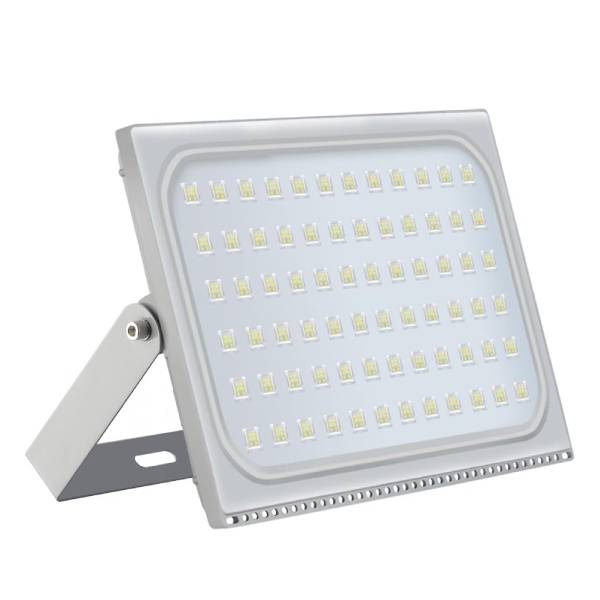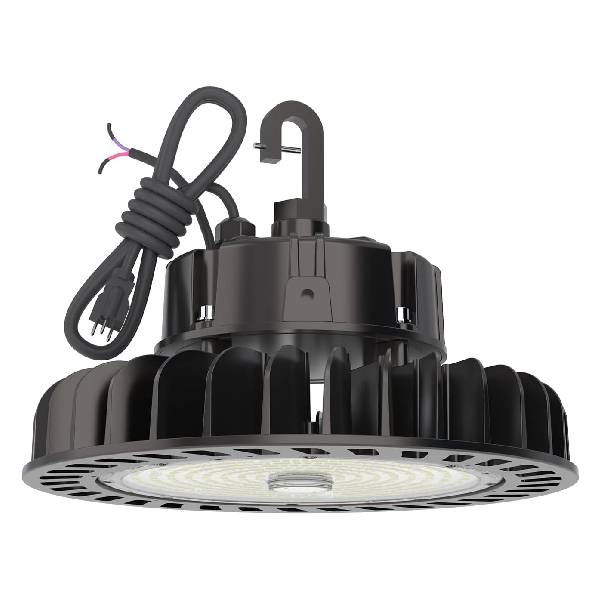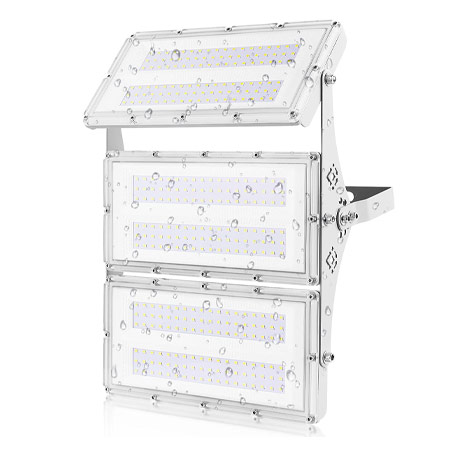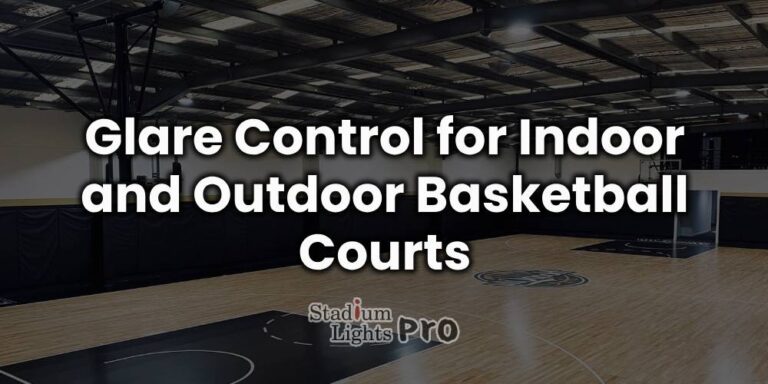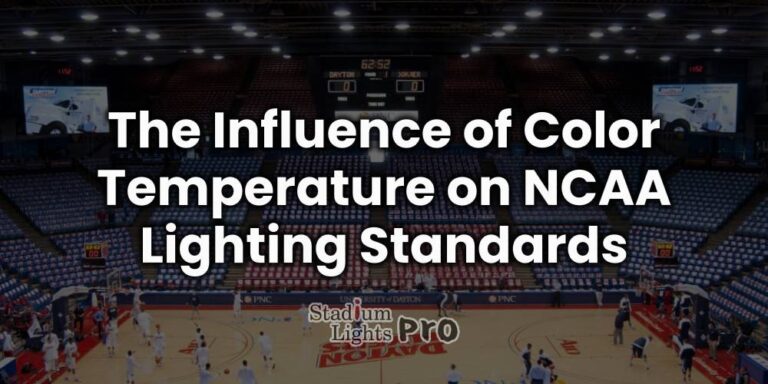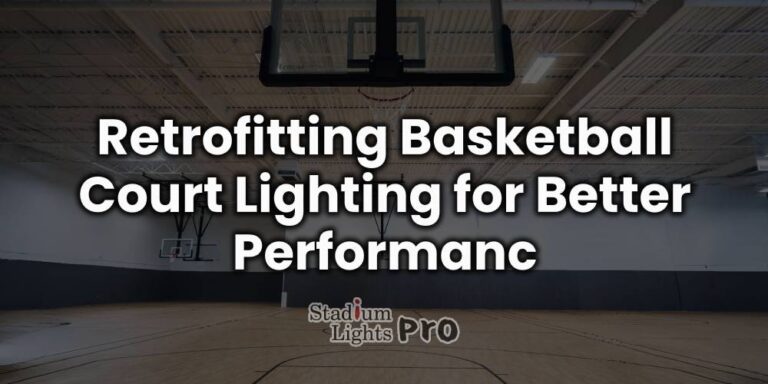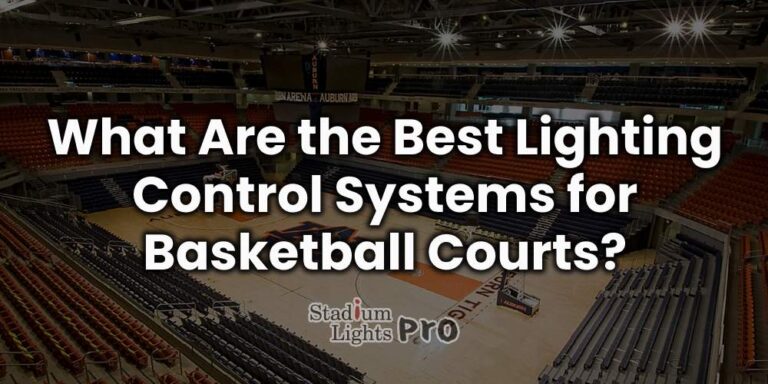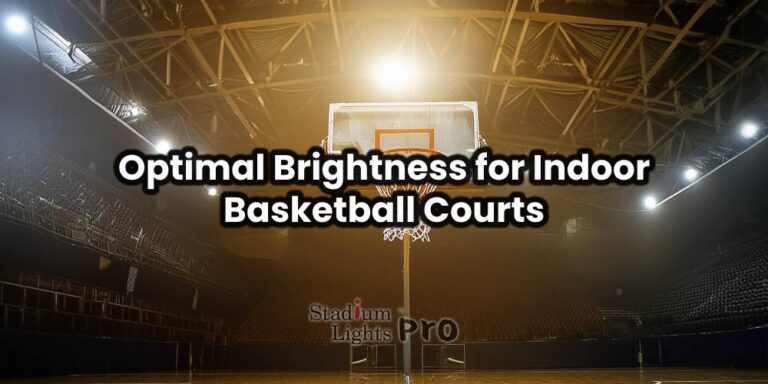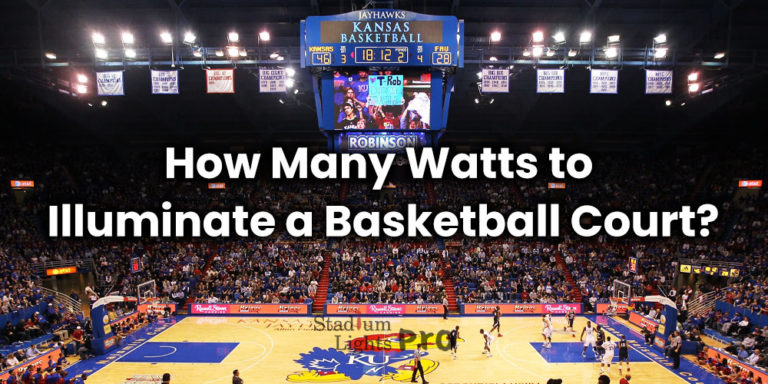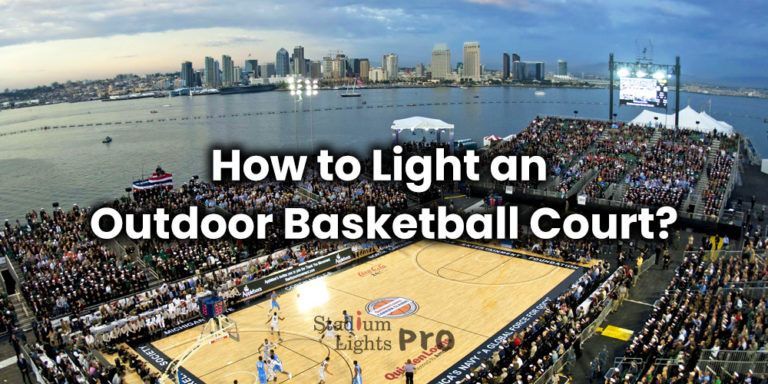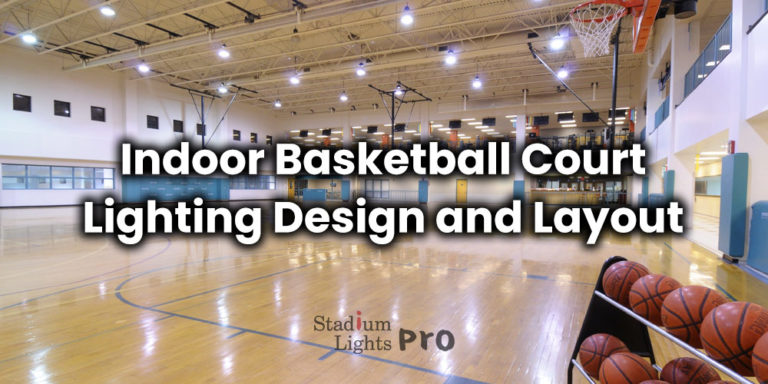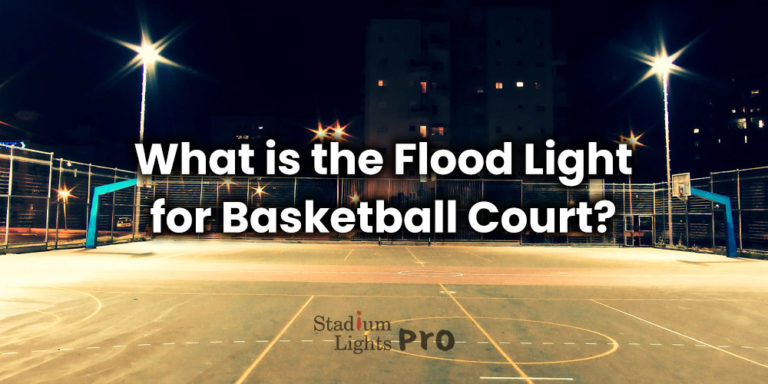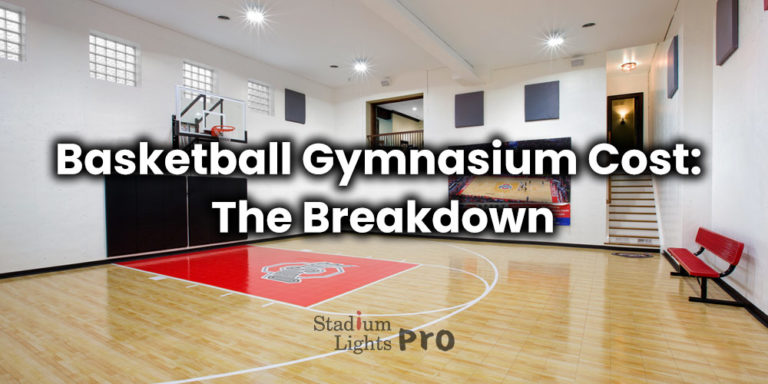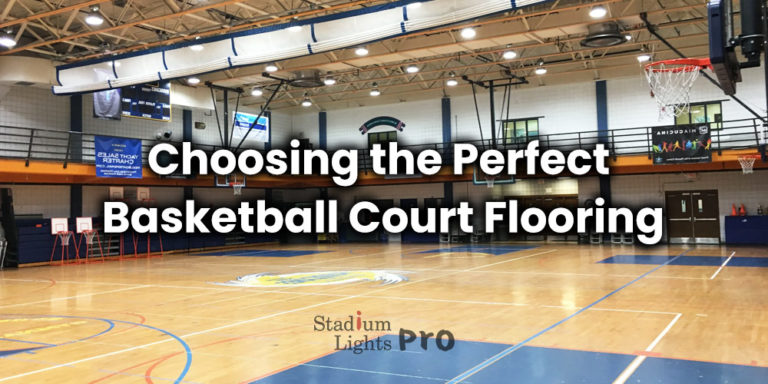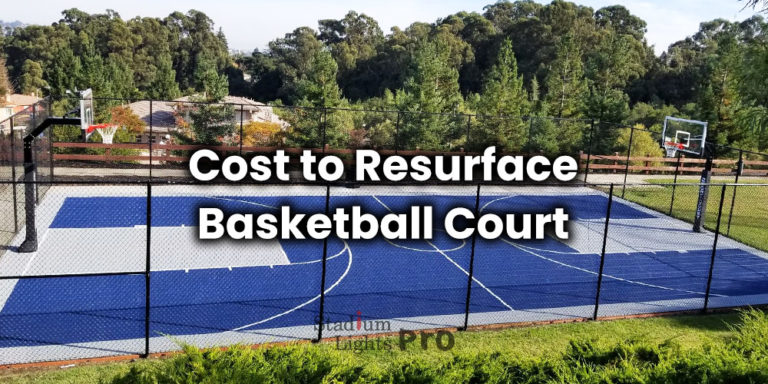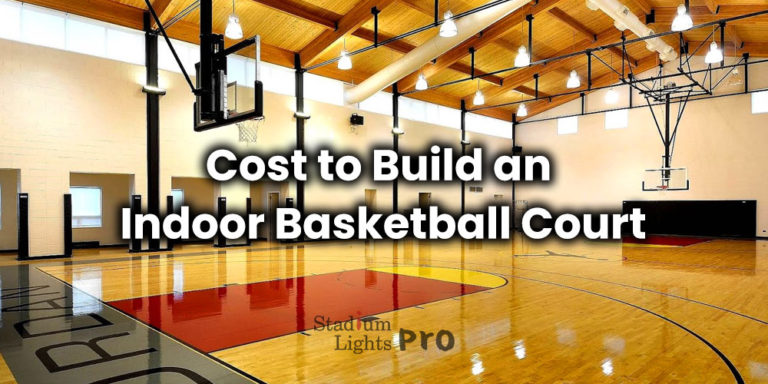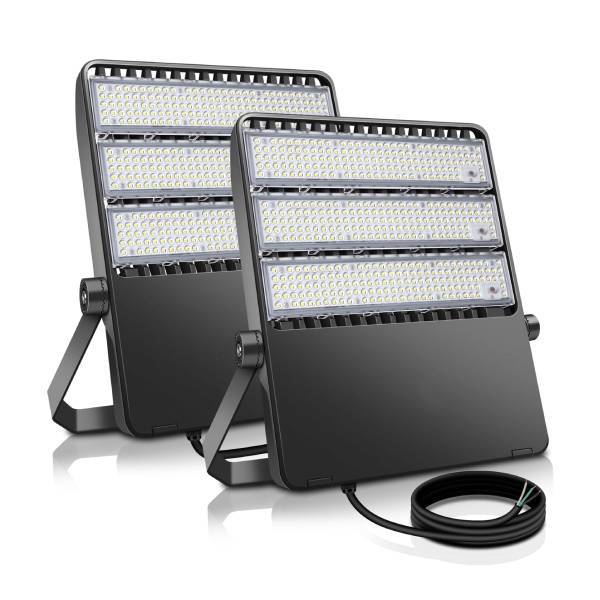
Basketball Court Lighting
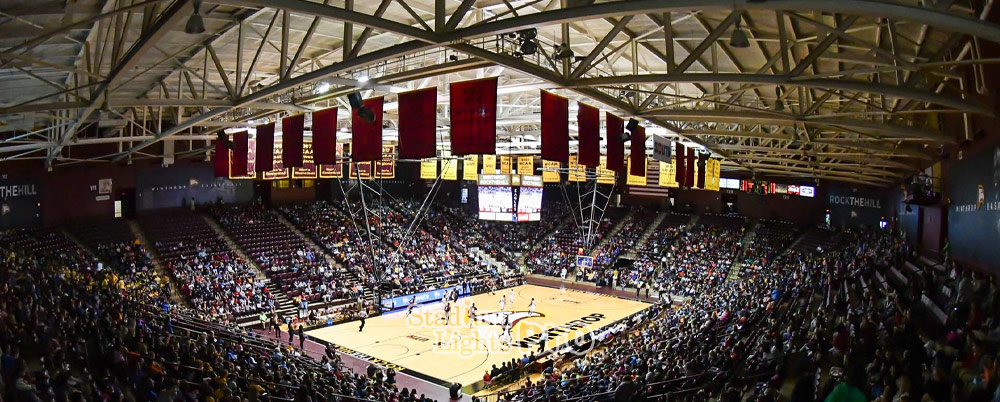
Welcome to our comprehensive guide on lighting up a basketball court, where we will equip you with valuable tips, knowledge, and industry standards to ensure optimal illumination. Whether you are a facility manager, a basketball enthusiast, or involved in organizing games and tournaments, understanding the lighting requirements and implementing the right lighting standard is crucial. We will delve into the intricacies of basketball court lighting, exploring the essential elements that contribute to visibility, player performance, and overall safety.
When it comes to the electrifying world of basketball, every detail matters. From the thudding of sneakers on the hardwood to the swish of a perfectly executed shot, the game is a symphony of skill and strategy. However, amidst all the action, there is one often-overlooked factor that plays a pivotal role: lighting.
Proper basketball court lighting is not just a mundane necessity; it is the invisible force that enhances visibility, elevates player performance, and safeguards the safety of athletes.
Contact us for a free lighting consultation
Table of Contents
ToggleImportance of basketball court lighting
The importance of adequate lighting on a basketball court cannot be overstated. Here are three key reasons why proper lighting is crucial.
Enhancing visibility
Clear visibility is essential for all participants involved in a basketball game, including players, referees, and spectators. Proper lighting ensures that everyone can see the court, players, and the ball with clarity and accuracy. This is especially essential for making fair calls, accurate passes, and precise shots. With enhanced visibility, the game can unfold smoothly, ensuring a fair and competitive playing field.
Optimizing player performance
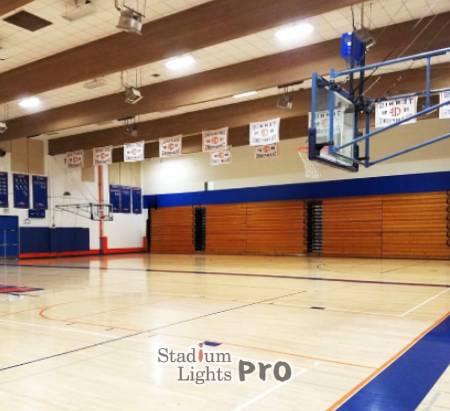 Well-lit courts have a significant impact on player performance. Adequate lighting enables players to have better depth perception, allowing them to accurately gauge distances and positions of their opponents and teammates. It also enhances spatial awareness, enabling players to make quick decisions and execute precise movements. When players can see clearly and accurately assess their surroundings, their performance and confidence are elevated, leading to a more engaging and enjoyable game for everyone involved.
Well-lit courts have a significant impact on player performance. Adequate lighting enables players to have better depth perception, allowing them to accurately gauge distances and positions of their opponents and teammates. It also enhances spatial awareness, enabling players to make quick decisions and execute precise movements. When players can see clearly and accurately assess their surroundings, their performance and confidence are elevated, leading to a more engaging and enjoyable game for everyone involved.
Ensuring safety
Safety is paramount in any sports setting, and basketball is no exception. Proper lighting on the court helps eliminate potential hazards and reduces the risk of accidents. Well-lit areas minimize tripping or collision risks, as players can clearly see any obstacles or uneven surfaces. Moreover, adequate lighting enables swift response to emergencies, as both players and officials can easily identify and address any medical issues or game-related incidents. By prioritizing safety through proper lighting, the overall well-being of participants is upheld.
What are the basketball court lighting standards?
Basketball court lighting standards are guidelines that specify the recommended lighting requirements for optimal visibility, safety, and performance during basketball games. While the specific standards may vary slightly depending on the organization or jurisdiction, here are some commonly accepted lighting recommendations:
Illuminance levels
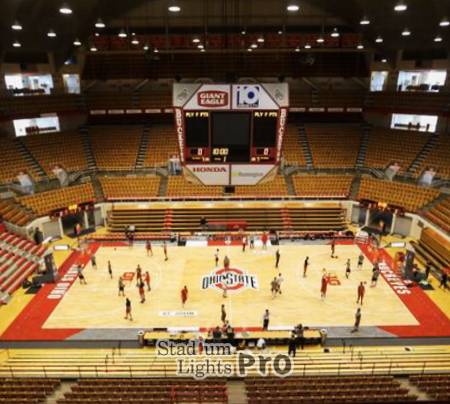 The recommended illuminance levels for basketball court lighting are essential in ensuring adequate visibility on the court, enabling players to perform at their best and ensuring fair and accurate gameplay. The illuminance levels are typically measured in foot-candles (fc) or lux, with specific guidelines depending on the level of play.
The recommended illuminance levels for basketball court lighting are essential in ensuring adequate visibility on the court, enabling players to perform at their best and ensuring fair and accurate gameplay. The illuminance levels are typically measured in foot-candles (fc) or lux, with specific guidelines depending on the level of play.
For professional games, the average illuminance level at the playing surface is generally recommended to be around 150-200 fc (1,600-2,200 lux). This higher illuminance level is necessary to meet the demanding requirements of professional athletes, providing optimal visibility for precise movements, quick decision-making, and accurate ball tracking. The increased illuminance level helps minimize the risk of shadows or dark areas that could hinder players’ performance and impact the game’s fairness.
For recreational or amateur play, the illuminance levels can be slightly lower compared to professional games. Recommended illuminance levels for recreational or amateur basketball may range between 50-100 fc (540-1,100 lux). While still providing sufficient visibility, this range acknowledges the varying needs and environments of non-professional basketball activities. The slightly lower illuminance levels help balance energy efficiency and cost considerations for recreational facilities while ensuring players can see clearly and participate safely.
These recommended illuminance levels serve as general guidelines, and specific regulations or requirements may vary depending on factors such as local regulations, facility size, and level of competition. Moreover, the illuminance levels may differ for different areas of the court, such as the playing surface, sidelines, or spectator areas.
To achieve the recommended illuminance levels, lighting design professionals consider factors such as the type and positioning of lighting fixtures, beam angles, and uniformity of light distribution. They ensure that the lighting system provides consistent and even illumination across the court, minimizing shadows, glare, and dark spots.
Uniformity
Lighting uniformity plays a critical role in basketball court lighting to ensure a consistent and well-illuminated playing surface. It refers to the even distribution of light across the court, minimizing shadows or dark spots that could negatively impact gameplay and visual perception. A recommended uniformity ratio of 0.7 or higher is often suggested, indicating that the minimum illuminance level should be at least 70% of the average illuminance level across the playing surface.
By maintaining a high level of uniformity, basketball court lighting helps eliminate areas of lower illumination that could affect players’ ability to accurately perceive depth, track the ball, and make quick decisions. Shadows or dark spots can create visual distractions, potentially leading to misjudgments, collisions, or unfair play. A well-lit and uniform playing surface ensures fair competition and enhances player safety.
To achieve optimal lighting uniformity, lighting design professionals carefully plan the positioning and orientation of lighting fixtures. They consider factors such as the height of the fixtures, their distance from the court, and the beam angles of the lights. The goal is to evenly distribute the light across the playing surface, minimizing variations in illuminance levels.
Maintaining a uniformity ratio of 0.7 or higher ensures that the minimum illuminance level is at least 70% of the average illuminance level. This ensures that even in areas where the light intensity is slightly lower due to factors like fixture spacing or obstructions, the illumination is still sufficient for players to see and perform without hindrance.
By adhering to lighting uniformity standards, basketball facilities create a visually comfortable environment where players can accurately perceive their surroundings, assess their opponents’ movements, and make split-second decisions. This not only enhances player performance but also contributes to the overall enjoyment and fairness of the game.

Color rendering index (CRI)
The Color Rendering Index (CRI) is a measurement that assesses how accurately colors are rendered under a specific light source compared to a reference light source. In the context of basketball court lighting, a CRI of 70 or higher is generally recommended to ensure players can distinguish colors accurately, including differentiating team uniforms and the basketball.
Having a high CRI is crucial because it ensures that the lighting accurately represents the true colors of objects illuminated by the light source. In a basketball game, players rely on their ability to quickly recognize and differentiate various colors, such as the jerseys of their teammates and opponents, as well as the color of the basketball itself.
With a CRI of 70 or higher, basketball court lighting provides sufficient color accuracy and fidelity, allowing players to easily identify and distinguish between different colors. This enhances their visual perception and facilitates quick decision-making on the court. Accurate color representation is crucial in fast-paced situations where split-second judgments are necessary, such as passing the ball or identifying open teammates.
Furthermore, accurate color rendering contributes to the overall aesthetics and atmosphere of the game. Spectators can enjoy a more visually pleasing experience when the lighting accurately represents the colors of the court, team uniforms, and other elements in the environment. It adds vibrancy and enhances the overall visual impact of the game.
To achieve a high CRI in basketball court lighting, high-quality light sources, such as LEDs with excellent color rendering properties, are typically used. These light sources provide a balanced spectrum of light that closely resembles natural daylight, allowing for accurate color reproduction. Lighting designers and engineers carefully select fixtures and light sources with high CRI values to ensure optimal color rendering on the court.
Glare control
Glare occurs when there is excessive brightness or contrast that exceeds the visual adaptation capabilities of the eyes, leading to reduced visibility and potential discomfort. To ensure a clear line of sight and optimal visibility, lighting fixtures should be designed and positioned to minimize both direct glare and reflective glare off the playing surface.
Direct glare refers to the intense brightness emitted directly from the light source that can cause visual discomfort and hinder visibility. It occurs when the lighting fixtures are not properly shielded or when the light source is within the direct line of sight of players or spectators. To minimize direct glare, lighting fixtures should incorporate appropriate shielding, louvers, or baffles to direct the light downward and prevent it from directly reaching the eyes. By directing the light towards the playing surface and away from the line of sight, direct glare can be significantly reduced.
Reflective glare, on the other hand, occurs when light reflects off the playing surface, causing a distracting and potentially blinding effect. This can happen when the playing surface has a highly reflective finish or when the lighting angles are not properly adjusted. To minimize reflective glare, lighting fixtures should be positioned and aimed in a way that reduces the reflection of light off the playing surface. Besides, selecting non-reflective or matte finishes for the court surface can help minimize the potential for reflective glare.
By effectively controlling glare, basketball court lighting ensures that players can clearly see the court, their teammates, opponents, and the ball without visual discomfort or impairment. This allows for better focus, coordination, and overall performance on the court. Moreover, controlling glare enhances the viewing experience for spectators, enabling them to follow the game comfortably and without distractions.
Lighting designers and engineers consider various factors when designing basketball court lighting to control glare effectively. These include selecting appropriate fixtures with suitable optics, considering the placement and aiming of fixtures, and evaluating the court’s reflective properties. By carefully addressing these considerations, lighting professionals can minimize both direct and reflective glare, providing optimal visibility and a visually comfortable environment for players and spectators.
Flicker and strobe effect
Flicker refers to the rapid fluctuation of light output, usually caused by variations in the electrical current powering the LEDs. Strobe effect, on the other hand, occurs when there is a perception of intermittent or frozen movement due to the interaction between the lighting system’s refresh rate and the movement of objects.
Visual disturbances caused by flicker and strobe effect can have detrimental effects on player performance. These disturbances can lead to eye strain, reduced visual acuity, and even affect depth perception and reaction time, all of which are crucial for basketball players to perform at their best.
LED lighting systems are known for their ability to minimize flicker and strobe effect compared to other lighting technologies. High-quality LEDs are designed with sophisticated drivers and power management systems that help minimize flicker to levels that are imperceptible to the human eye.
When selecting LED lighting systems for basketball courts, it is necessary to consider the flicker percentage and strobe effect specifications provided by the manufacturer. Ideally, the flicker percentage should be below 10% to ensure a visually stable and consistent illumination. Similarly, the strobe effect should be minimal, with a high refresh rate to minimize the perception of flickering or frozen motion.
By ensuring low flicker percentage and minimal strobe effect, LED lighting systems provide a visually comfortable and stable environment for basketball players. This allows them to focus on the game without distractions or visual disturbances, maintaining their concentration, reaction time, and overall performance.
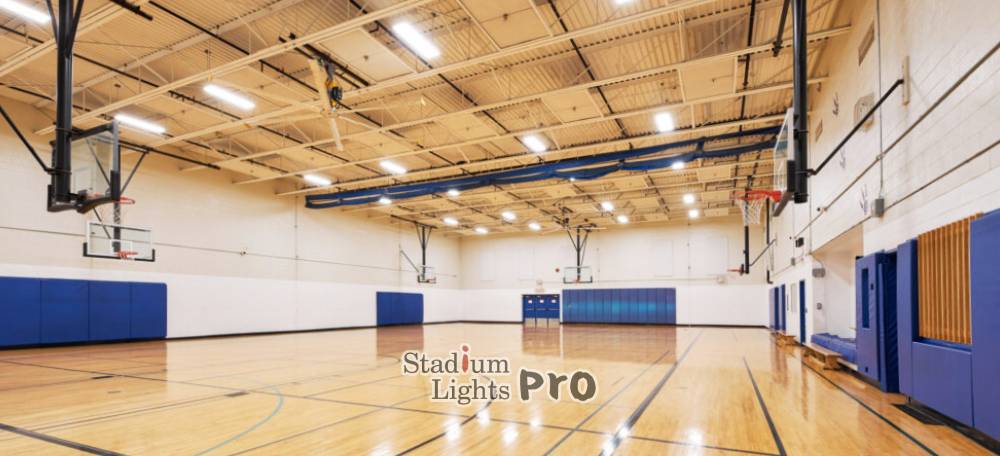
Lighting layout and distribution
When it comes to basketball court lighting, ensuring even distribution of lighting fixtures is crucial to achieve uniform illumination without excessive shadows or dark areas. An evenly lit court provides consistent visibility for players, allowing them to perform at their best and minimizing any potential disadvantages caused by uneven lighting.
To achieve uniform illumination, the lighting layout must take into account several factors. One consideration is the ceiling height of the facility. Different ceiling heights may require different types of lighting fixtures and mounting positions to ensure optimal coverage. Higher ceilings may necessitate fixtures with a higher lumen output or a wider beam angle to effectively illuminate the entire playing surface.
The positioning of the lighting fixtures is another critical aspect. They should be strategically placed to cover the court evenly and minimize any shadows or dark spots. This may involve a combination of overhead fixtures, side-mounted fixtures, or a combination of both, depending on the layout and design of the facility.
The beam angles of the lighting fixtures play a significant role in achieving uniform illumination. The beam angle determines the spread of light emitted by the fixture. Choosing fixtures with appropriate beam angles allows for optimal coverage without excessive spillage or wasted light. Lighting designers carefully analyze the court layout and select fixtures with the right beam angles to ensure consistent illumination across the playing surface.
Furthermore, we may consider the lighting requirements for different areas of the court, such as the playing surface, sidelines, and spectator areas. Each area may have specific lighting needs, and the lighting layout should accommodate these requirements while maintaining overall uniformity.
By evenly distributing the lighting fixtures across the court and considering factors like ceiling height, mounting positions, and beam angles, basketball court lighting can achieve optimal coverage and eliminate shadows or dark areas. This ensures that players have a clear view of the court and all its elements, allowing for accurate ball tracking, precise movements, and fair gameplay.
Technological advancements
Recent technological advancements in basketball court lighting
LED lighting systems
LED (Light Emitting Diode) technology has revolutionized basketball court lighting in recent years. LED lights offer numerous advantages over traditional lighting systems, making them a popular choice for modern courts.
Intelligent lighting controls
Advanced lighting controls, such as motion sensors and automated systems, have emerged to optimize energy usage and provide customizable lighting solutions for different game scenarios.
Wireless connectivity
The integration of wireless connectivity allows for seamless control and monitoring of lighting systems, enhancing convenience and flexibility in managing basketball court illumination.
Benefits of LED lighting
LED lighting has become a game-changer in basketball court illumination due to its remarkable benefits, including:
Energy efficiency
LED lights have emerged as an energy-efficient alternative to traditional lighting sources, revolutionizing basketball court illumination. The significant reduction in energy consumption offered by LED lighting systems brings about several benefits, including lower operational costs and a reduced environmental impact.
LED lights are highly efficient in converting electrical energy into light, minimizing energy wastage. Compared to traditional lighting sources such as incandescent or fluorescent bulbs, LEDs require significantly less electricity to produce the same level of brightness. This energy efficiency translates into substantial cost savings for basketball facilities, as they can enjoy reduced electricity bills and lower overall operational expenses.
Customizable settings
LED lights have revolutionized basketball court lighting by offering unparalleled flexibility in adjusting brightness levels and color temperature. This versatility allows for tailored lighting solutions that cater to specific game requirements and player preferences, resulting in an enhanced playing experience.
Brightness adjustment is a key advantage of LED lighting. With dimming capabilities, LED lights can be easily adjusted to provide the desired level of brightness on the court. During practice sessions or low-intensity games, the brightness can be reduced to create a more relaxed atmosphere. Conversely, for high-intensity matches or tournaments, the brightness can be increased to ensure optimal visibility and performance. This ability to customize the brightness levels enables basketball facilities to create an ideal lighting environment based on specific game requirements, enhancing the overall experience for players, officials, and spectators.
Color temperature adjustment is another valuable feature offered by LED lights. Color temperature refers to the perceived “warmth” or “coolness” of light. LED lights can be adjusted to emit light with varying color temperatures, ranging from warm white to cool white. Warmer color temperatures create a cozy and inviting ambiance, while cooler color temperatures provide a brighter and more energetic atmosphere. By adjusting the color temperature, basketball facilities can set the tone and mood of the game, tailoring the lighting to match the desired ambiance and creating an immersive experience for players and spectators alike.
Longer lifespan
One of the remarkable advantages of LED lights for basketball court lighting is their exceptionally long lifespan. LED lights have a significantly longer operational life compared to traditional lighting sources, such as incandescent or fluorescent bulbs. This extended lifespan translates into reduced maintenance efforts and costs associated with frequent bulb replacements, offering numerous benefits for basketball facilities.
The longevity of LED lights can be attributed to their unique construction and design. Unlike traditional bulbs that rely on filaments or gases, LED lights utilize solid-state technology, where light is emitted through semiconductors. This solid-state construction makes LED lights more durable and resistant to shock, vibrations, and other physical impacts that can cause premature failures. Consequently, LED lights can operate reliably for tens of thousands of hours before needing replacement.
The extended lifespan of LED lights results in significant cost savings for basketball facilities. With traditional lighting sources, regular bulb replacements are necessary, especially in high-usage areas like basketball courts. These replacements can be time-consuming, requiring maintenance personnel to access and replace bulbs regularly. However, the prolonged lifespan of LED lights reduces the frequency of replacements, minimizing the associated labor and material costs. Facilities can allocate their resources and manpower to other critical maintenance tasks, ultimately saving time and money.
Additional features enhancing convenience and flexibility
LED lighting systems come equipped with various features that further improve convenience and flexibility, including
Dimming capabilities
The dimming capability allows basketball facilities to create optimal lighting conditions based on specific needs, enhancing the overall experience for players, officials, and spectators.
Dimming LED lights enables basketball facilities to adjust the brightness levels according to different requirements. During warm-up sessions or low-intensity practice sessions, the lights can be dimmed to provide a more relaxed and comfortable atmosphere. This helps create a conducive environment for players to warm up and prepare without excessive glare or harsh lighting.
On the other hand, during actual games or intense practice sessions, the lights can be brightened to ensure optimal visibility and performance. Precise control over lighting levels allows for even and consistent illumination across the court, eliminating shadows and dark spots that can affect gameplay. This helps players accurately track the ball, evaluate their surroundings, and make quick decisions with confidence.
Dimming LED lights also offers benefits during events like halftime shows, player introductions, or award ceremonies. By dimming the lights, the focus can be shifted to specific areas or activities, creating a spotlight effect that enhances the overall visual experience and captivates the audience.
Instant-on functionality
Unlike traditional lighting sources that require a certain period to reach their full brightness, LED lights offer immediate visibility as soon as they are turned on. This feature ensures that basketball facilities have optimal lighting conditions right from the moment the lights are switched on, enhancing the overall efficiency and experience.
The instant-on functionality of LED lights eliminates the need to wait for the lights to warm up or reach their maximum brightness. As soon as the switch is activated, the LED lights provide consistent and reliable illumination, allowing players, officials, and spectators to see clearly without any delay. This immediate visibility is especially crucial during time-sensitive situations, such as game starts, timeouts, or restarts, where every second counts.
The absence of warm-up time also enhances the efficiency of basketball court operations. Facilities can save valuable time by instantly activating the lights without any preheating period. This is particularly beneficial for practices, tournaments, or multi-game events where quick turnarounds are necessary. With instant illumination, there is no need to factor in additional time for the lights to reach their full brightness, ensuring seamless transitions between different activities.
Remote control options
Some LED lighting systems offer remote control capabilities, enabling operators to adjust lighting settings and configurations remotely, saving time and effort.
With remote control options, operators can conveniently access and modify lighting settings without physically accessing the control panels or fixtures. This eliminates the need to manually adjust each light individually, especially in larger or multiple court facilities. Instead, operators can make changes from a central location, streamlining the process and reducing the time required for lighting adjustments.
The remote control functionality enables operators to customize lighting settings based on specific requirements or preferences. For example, during different game phases or events, such as warm-ups, practice sessions, or official games, operators can easily switch between pre-programmed lighting configurations. This flexibility allows for quick and seamless transitions between different lighting scenarios, enhancing the overall experience for players and spectators.
Moreover, remote control capabilities offer the advantage of real-time adjustments during gameplay. If there is a need to modify the lighting conditions due to changing circumstances or unforeseen events, operators can make instant changes from a remote location. For instance, if weather conditions impact natural lighting or if there is a delay in game play, operators can promptly adapt the lighting settings without causing disruptions or delays.
The remote control feature also aids in maintenance and troubleshooting efforts. Operators can remotely monitor the performance of the lighting system, quickly identify any issues or failures, and make necessary adjustments or repairs without having to physically inspect each light fixture. This saves valuable time and effort, enabling maintenance personnel to efficiently address any lighting-related concerns.
These recent technological advancements, with LED lighting as the forefront, have transformed basketball court lighting. Through their energy efficiency, customizable settings, longer lifespan, and additional features like dimming capabilities, instant-on functionality, and remote control options, these advancements have significantly improved the convenience, flexibility, and overall quality of basketball court illumination.
Frequently asked questions about basketball court lighting
How do I select the right lighting fixtures for a basketball court?
When choosing lighting fixtures for a basketball court, consider factors such as efficiency, light distribution, color rendering, and durability. LED fixtures are commonly recommended due to their energy efficiency, long lifespan, and superior light quality. Look for fixtures specifically designed for sports lighting, with optics that provide even illumination and minimize shadows and glare.
Are there any energy-efficient options for basketball court lighting?
Yes, LED lighting is the most energy-efficient option for basketball court lighting. LED fixtures consume significantly less energy compared to traditional lighting technologies such as metal halide or fluorescent lights. They also have a longer lifespan, reducing maintenance and replacement costs. LED fixtures can be easily dimmed or controlled, allowing further energy savings.
How important is maintenance for basketball court lighting?
Regular maintenance is crucial to ensure optimal performance and longevity of basketball court lighting. It includes tasks such as cleaning fixtures, replacing faulty lamps or drivers, checking wiring connections, and inspecting for any physical damage. A well-maintained lighting system not only provides better visibility but also helps identify issues early and prevent potential safety hazards.
Are there any regulations or standards for basketball court lighting?
Various organizations and governing bodies have guidelines and standards for basketball court lighting. For example, the Illuminating Engineering Society (IES) provides recommended practices for sports lighting, including basketball. Local regulations and sports associations may also have specific requirements regarding light levels, uniformity, glare control, and spill light restrictions. We need to consult these standards and comply with applicable regulations when designing or upgrading basketball court lighting.
Can basketball court lighting be customized for different events or needs?
Yes, basketball court lighting can be customized to meet different event requirements or user preferences. LED lighting fixtures often offer dimming or zoning capabilities, allowing you to adjust the light levels based on specific activities or user preferences. Some systems even have the ability to change the color temperature of the light, providing flexibility for different events or aesthetic considerations.
What is the ideal color temperature for basketball court lighting?
The ideal color temperature for basketball court lighting is typically between 5000K and 6500K, which falls within the cool white to daylight range. This color temperature provides a crisp and bright light that enhances visibility and contrast on the court. It helps players track the ball and movements more effectively.
How can I reduce glare on a basketball court?
Glare can be reduced by using lighting fixtures with proper optics and design. Opt for fixtures that have built-in glare control features such as shields, louvers, or lenses to direct the light downward and minimize direct glare. Besides, ensuring uniform lighting distribution and avoiding excessive contrast between the playing surface and surrounding areas can also help reduce glare.
What is the recommended mounting height for basketball court lighting fixtures?
The recommended mounting height for basketball court lighting fixtures depends on the type of lighting system and the specific court dimensions. As a general guideline, the fixtures are typically mounted at a height of 20 to 30 feet above the playing surface. However, we can consult lighting design professionals who can conduct photometric calculations based on the court size and specific lighting requirements.
Are there any lighting controls or automation options available for basketball court lighting?
Yes, there are lighting control and automation options available for basketball court lighting. These systems can include features such as occupancy sensors, daylight sensors, timers, and wireless controls. They allow for energy-saving strategies like dimming or turning off lights when the court is not in use. Advanced systems can also integrate with building management systems for centralized control and monitoring.
Can LED lighting improve the quality of basketball court video recordings?
LED lighting can significantly improve the quality of video recordings on a basketball court. LED fixtures produce a high-quality, flicker-free light that is compatible with high-speed cameras and video recording equipment. They offer consistent lighting conditions, minimize color distortion, and provide excellent color rendering, resulting in better image clarity and accuracy during video capture.
Are there any considerations for outdoor basketball court lighting?
Outdoor basketball court lighting requires additional considerations compared to indoor lighting. Apart from meeting the desired light levels, fixtures must be weatherproof and capable of withstanding environmental elements such as rain, snow, and temperature fluctuations. It’s crucial to select fixtures with appropriate IP (Ingress Protection) ratings for outdoor use and ensure proper aiming and shielding to minimize light spill and glare to neighboring areas.
Can basketball court lighting contribute to energy savings?
Yes, basketball court lighting can contribute to energy savings when using energy-efficient fixtures such as LED technology. LED lights consume significantly less energy than traditional lighting sources, resulting in reduced electricity costs. Besides, the ability to dim or control LED fixtures allows for further energy savings by adjusting light levels based on specific needs, reducing energy consumption during off-peak hours or when the court is not in use.
Conclusion
In conclusion, proper basketball court lighting is essential for enhancing visibility, optimizing player performance, and ensuring safety. Recent technological advancements, particularly LED lighting, offer numerous benefits such as energy efficiency, customizable settings, longer lifespan, dimming capabilities, instant-on functionality, and remote control options. Adhering to lighting standards, including recommended illuminance levels, lighting uniformity, color rendering index (CRI), and glare control, ensures an optimal lighting environment. Also, evenly distributing lighting fixtures across the court with careful consideration of ceiling height, mounting positions, and beam angles guarantees uniform illumination without excessive shadows or dark areas. By incorporating these elements, basketball court lighting provides an optimal playing experience for athletes and spectators alike.
For further information and to discuss your specific basketball court lighting needs, we encourage you to contact us. Our team of experts is available to provide detailed insights, answer any questions you may have, and offer professional guidance tailored to your requirements. We understand the importance of proper lighting in enhancing the game experience, and we are committed to helping you achieve optimal results. Don’t hesitate to reach out to us for a comprehensive consultation and to explore how our expertise can contribute to the success of your basketball court lighting project.

